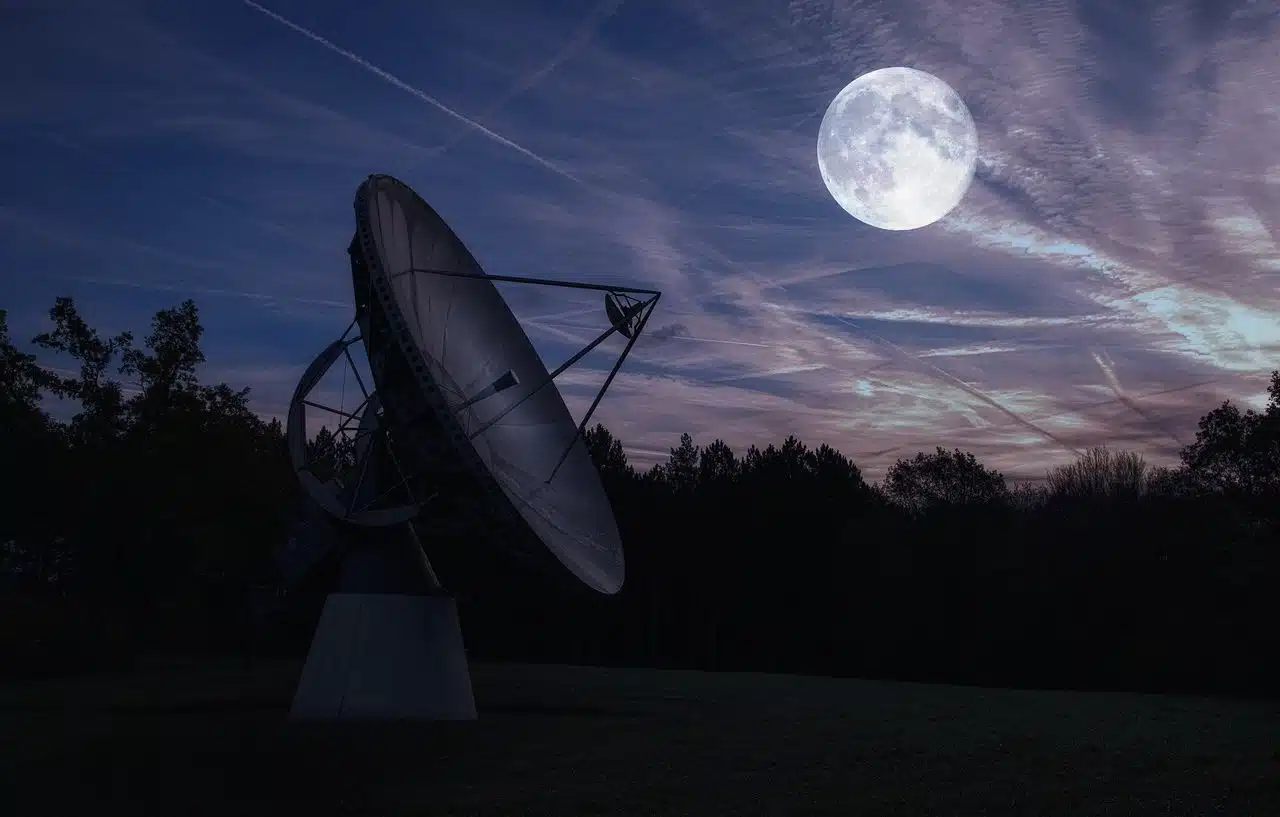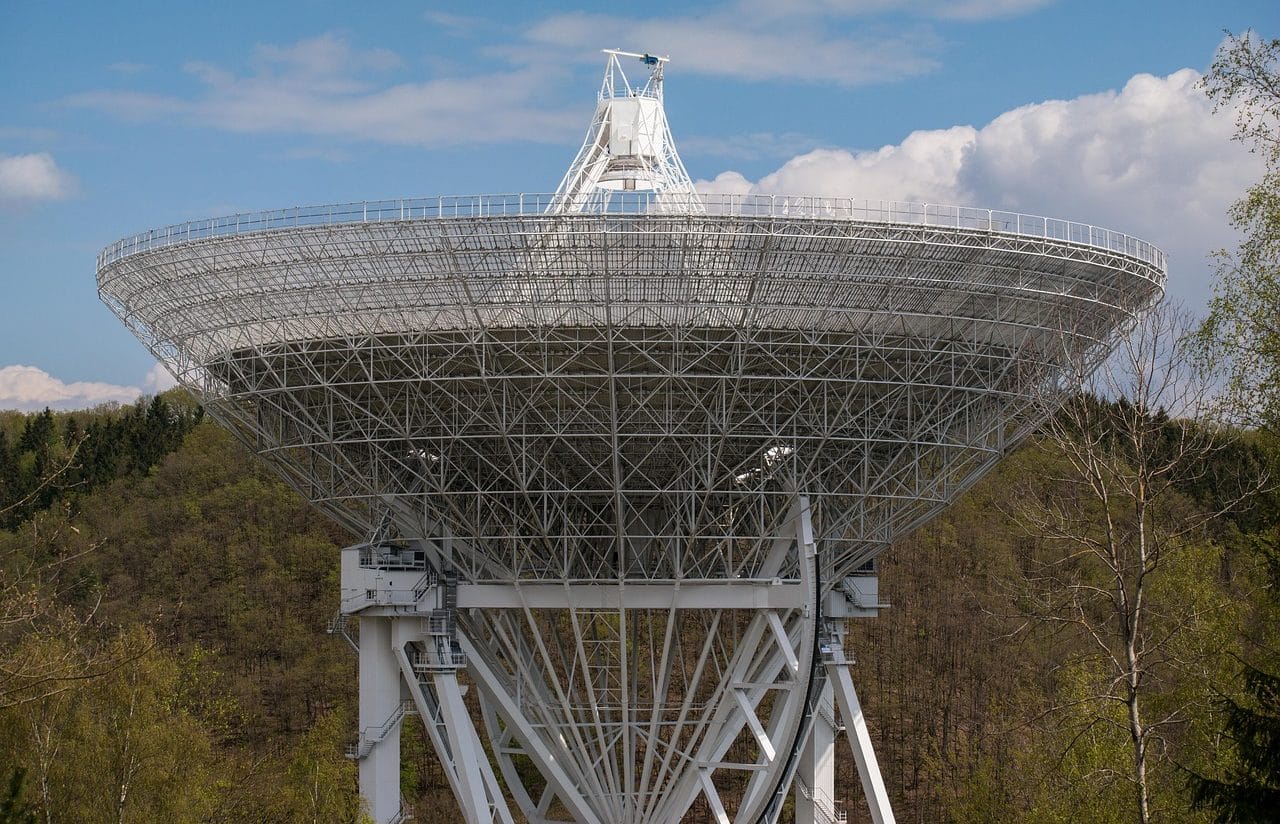
With a special radio receiver and an antenna, you can build a radio telescope and use this equipment to detect radio waves that come from space.
A radio telescope is an instrument intended for astronomical observation . It is an element capable of detecting each radio wave that comes from the cosmos , serving then for the study of the electromagnetic spectrum linked to astronomical objects since it makes possible the analysis of the radio frequency fraction emitted by said physical entities. Likewise, it is useful to be able to follow the path of an unmanned space flight.
This device, suitable for use both during the day and at night, has three key components: a large satellite dish, an extremely sensitive radio receiver and some signal or data processing system.
As noted when reviewing the beginnings of the radio telescope , it was an American engineer named Grote Reber who was the first to design one of these products, which was completed in 1937. It is usually considered that the starting point of radio astronomy was the exploration of the sky. carried out by that American who is also remembered as an amateur astronomer and an enthusiastic radio amateur who, in 1944, publicly presented for the first time a radio map centered on the Via Dairy . Since then, the construction and installation of radio telescopes has been perfected thanks to greater technical knowledge and resources. Although there is still much to achieve and decipher, this instrument has managed to position itself as a fundamental element to accumulate advances in astronomy .
Types of radio telescope
Today it is possible to recognize various models and types of radio telescopes that have been developed throughout history based on the knowledge and technology available at each time.
In general terms, a distinction is made between single-antenna radio telescopes , those with a synthetic aperture and the so-called astronomical interferometers . The latter are groups of individual antennas of radio telescopes or telescopes that function as a single element and are intended to observe, through interferometry techniques, galaxies , nebulae and stars .
In the last part of the '50s, to detail a specific case as a reference, the Jodrell Bank observatory linked to the University of Manchester was characterized by having what, at that time, was considered the largest radio telescope. from a single antenna that was on the planet .
The Parkes radio telescope , completed in the early part of the '60s, is another piece of equipment with an interesting history since it is in an observatory located on Australian soil that was very useful to NASA , especially during the Apollo mission. 11 bound for the moon.

Thanks to radio telescopes, we are learning more about the Milky Way and we are able to detect and investigate mysterious issues in the universe.
When listing the most relevant of these instruments, one cannot fail to refer to the Murchison Widefield Array (MWA) radio telescope through which astonishing images of the heart of the Milky Way were obtained, leading researchers to detect remains of more than twenty massive stars that, towards the end of their existence, ended up exploding in supernovae. Another transcendental feature is the LOFAR radio telescope that stands out thanks to the significant level of sensitivity of the antennas distributed over multiple stations.
The Arecibo radio telescope (essential for making valuable scientific discoveries and providing data to ambitious projects until, in 2020, it was seriously damaged and forced to be converted into a center specialized in teaching technology and science because it is no longer suitable for space missions) and the FAST radio telescope (an element installed in China notorious for its dimensions and because its maintenance will be carried out by robots, beyond its detection of ultrafast radio bursts being studied to establish if they are generated by a neutron star , a black hole or if they are extraterrestrial signals ) also deserve special mentions.
News and innovative projects
New developments and innovative projects in relation to radio telescopes frequently emerge.
In 2024 , as different media outlets have revealed, the University of Concepción (UdeC) located in Chile will begin to be in charge of controlling one of these teams. The ambitious challenge is part of the Leighton Chajnantor Telescope (LCT) project, which involves transferring the material from Hawaii to Chilean soil. In that same nation, thanks to a collaboration pact between the University of Chile and the National Observatory of Japan , technological materials will be produced for the Atacama Large Millimeter/submillimeter Array (ALMA) with the aim of deepening knowledge about protoplanetary disks , star formation , etc.

NASA has long been promoting a project to place a radio telescope in a crater on the moon.
On the other hand, it is expected that at the end of that same season the Chinese-Argentine radio telescope (CART) will begin operating in the Argentine province of San Juan , which will have a diameter of forty meters and will be used to promote projects of a astrophysicist and both georeferencing and geodesy work.
While sky observation continues to collect more and more data and astronomical research projects multiply, NASA has been working on a huge plan for some time to place what is imagined to be the largest in one of the craters of the moon . all radio telescopes .
